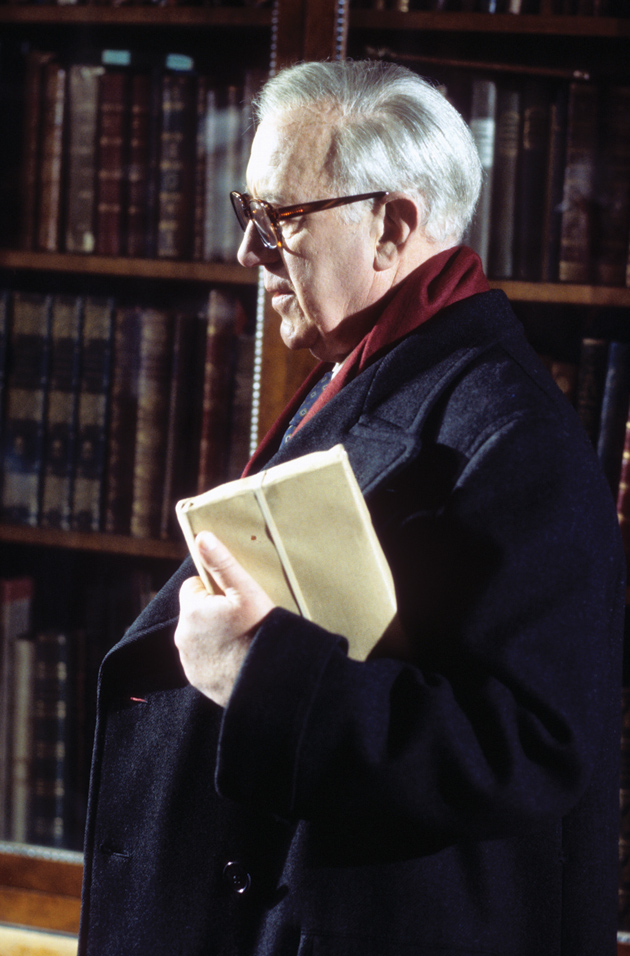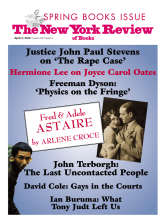Early in the cold war Soviet intelligence had an agent named Kim Philby embedded in the hierarchy of the British secret services. Philby was an Englishman of good pedigree (an important asset in London espionage circles) but troublesome habits (hard drinker, a bit too charming with women, including other men’s wives). He was a Cambridge man. The Russians gave him the code name “Stanley.” In 1963, upon learning that he was about to be caught, Philby fled to Moscow, one step ahead of the sheriff, as it were. He never came back.
John le Carré’s fictional Tinker, Tailor, Soldier, Spy, published in 1974, begins with the British discovering that a Soviet agent with the Russian code name “Gerald” is embedded in their secret services’ home office, also called “the Circus.” Evidence indicates that “Gerald”—a “mole” in le Carré’s spy jargon—is one of four men competing to become the next chief of British intelligence. Which is the traitor?
To dig him out, le Carré conjures up a crafty investigator—patient, polite, relentless master spy George Smiley—and we have the makings of a best seller about the once-romantic world of British espionage. In 1979, the book was successfully dramatized as a television miniseries in six hour-long installments notable for an unforgettable performance by Alec Guinness in the role of Smiley.
Now, thirty-three years later, Tinker, Tailor is back again, this time as a movie, though not so triumphant perhaps as its television predecessor. Movie remakes of the past’s greatest successes rarely are, but this one is handicapped from the start by being given only two hours and seven minutes to tell its tale. A story accustomed to wallowing in six-hour luxury is bound to look pale and wan when stripped down to a scanty two hours and seven minutes. There are many good reasons why movies cannot run on for six hours, so when cinematic necessity compels squeezing a fine six-hour show like Tinker, Tailor into one third the time, audience and story are likely to be shortchanged, as happens here.
Not all of the four “mole” suspects receive equal time on-screen; mystery and suspense are consequently diminished. Without time to linger over the busy love life of Ricki Tarr, le Carré’s romantic agent-as-loose-cannon, Ricki’s touching affair with Irina, wife of a carefree Russian spy, seems more bewildering than touching. Short rations also leave too little time to capture the defeated, end-of-history mood that gives the story its solemn weight. Less is not always more, but sometimes just less.
As a writer, le Carré is too good to settle for producing a mere best seller. The Philby case was an obvious stimulant to storytelling about catching a traitor, but it was also an extraordinary blow to British spirits. It was especially destructive to the long-held British conviction that there were certain things the British did better than anyone else, and that among these were espionage and counterintelligence.
The international press refused to let the story fade: Harold Adrian Russell Philby, another radical intellectual from Cambridge comfortably ensconced in the upper heights of British intelligence, said to have been a prime candidate to take charge of the whole apparatus, son of old St. John Philby, too, who’d known Kipling in India—which was why he called the boy “Kim,” of course—and what had the brilliant young Philby been doing for years? Funneling Britain’s secrets straight on to Soviet intelligence in Moscow.
For comic relief from Philby’s treachery, two lesser spies of great incompetence—Guy Burgess and Donald Maclean—were periodically brought back from newspaper morgues. Like Philby, Burgess and Maclean were Cambridge men and had been accepted into the intelligence branch without much questioning about their qualifications. Both had serious problems with alcohol and sex, had a taste for orgiastic parties, and talked indiscreetly about their work. Burgess had a gift for being offensive to a great variety of people and was deeply disliked by many and utterly detested by many more. Both had fled to Moscow in 1951 and were living on the Soviet dole while Philby, who had once been associated with them in the Washington embassy, continued leading the unexamined life of loyalty to Moscow.
When Philby bolted and some of the details came out, the shock was followed by extensive joking about the excellence of British intelligence. Worse, the Americans, fearing that London had become an express-mail route to Moscow, were withholding things from the British.
With their new CIA and its huge budget, the Americans may have grown a bit smug about their own excellence. Any superiority they felt about having an uncontaminated spy force was destined for an embarrassing end, however, with much later discoveries that American agents had for years been selling secrets to Moscow for no principle nobler than a big payday. A casual Internet search discloses that Robert Hanssen, an FBI agent on the KGB payroll for twenty-two years, was paid more than $1.4 million in cash and diamonds; that Aldrich Ames of the CIA received $4.6 million; and that the Navy warrant officer John Walker, who involved his own family in the sales, collected between $350,000 and $1 million.
Advertisement
Having worked a few years for British intelligence, le Carré was clearly sensitive to “the Circus’s” troubles during the Philby era. The atmosphere throughout Tinker, Tailor is heavy with a bleak sense that something vital has failed, that an England that once worked well now works very badly, that good men have suddenly become scarce and not very good men commonplace. In this bleakness, treachery is undermining moral decency as well as efficiency and the people who get promoted are men with no passion beyond their own desire for higher bureaucratic status.
Smiley becomes heroic by remaining loyal. In a stroke of heavy irony le Carré gives him a wife, Ann, who is famous throughout British intelligence and all the way to Moscow for incessant adulteries. Cuckoldry cannot shake Smiley’s loyalty to his marriage, however. He accepts betrayal as a deplorable but inevitable element of life, which may as well be tolerated unless it has murderous consequences.
What gives le Carré’s story its enduring power is his mole’s readiness to betray England. Motivation for individual human treachery—against the state, a friend, or a lover—must arise from an overwhelming passion, and what the viewer or the reader yearns for at the end of Tinker, Tailor, Soldier, Spy is an understanding of the passion that has driven the mole to betrayal.
Le Carré cannot intervene with a satisfying explanation of his own; he is not conducting a psychiatric clinic but creating a fictional world in which the characters must speak for themselves, and in the movie nothing very clear comes from the exposed traitor. This is faithful to the book, in which the unmasked “Gerald” seems anything but clearheaded himself about his dogged loyalty to Stalin’s bleak police state.
Interrogated by Smiley, the book says, he “drifted away…into half-baked political assertions.” He tells Smiley that “he hated America very deeply,” thought that Britain was “without relevance or moral viability in world affairs,” and believed that the West was dying of “greed and constipation.” In a contest between East and West he would prefer to see the East victorious—“an aesthetic judgement as much as anything,” he tells Smiley, a phrase that makes it into the film.
Here le Carré seems to be drawing on what was learned about Philby from interviews during his Moscow years. He was fifty-one years old when he arrived there in 1963. He was granted political asylum and Soviet citizenship, and was treated with respect and material favors over the next twenty-five years. At his death in 1988, he was accorded the high honor of being made a Hero of the Soviet Union. In 1990 the USSR issued a commemorative stamp bearing his portrait. Le Carré does not treat his fictional mole as well as the Soviets treated Philby, but has him murdered. For reasons not readily apparent, the film chooses to have him shot by rifle from a distance. In the book death was obviously preceded by a close physical encounter with his killer, and he is found with his head “propped unnaturally to one side, like the head of a bird when its neck has been expertly broken.”
This Issue
April 5, 2012
They’re the Top
We’re So Exceptional
Who Is Peter Pan?




